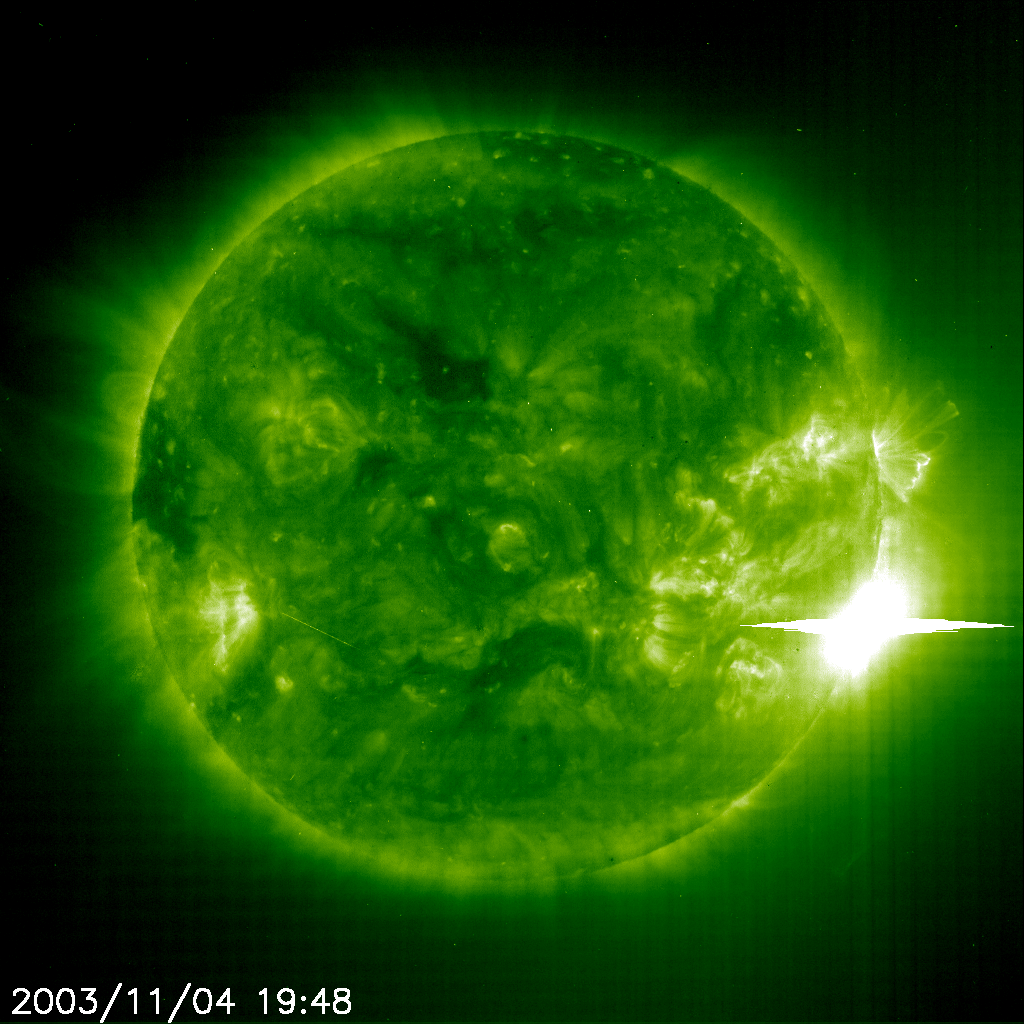

Sunspots
Sunspots are dark, cool areas that appear on the "surface" of the Sun.
They typically have the size of a planet and often appear in groups.

Photosphere
The photosphere is the visible surface of the Sun that we can see when we look into the blue sky. Since the Sun is a ball of very hot gas (called plasma), this is not a solid surface but is actually a layer about 100 km thick with temperatures around 6000 ºC. We call it the 'solar surface' because we cannot look inside.

Chromosphere
Is the next layer of the Sun around the photosphere. You need special cameras to see it. It is several thousand kilometres thick and during a solar eclipse you can see it as a reddish thin layer. Temperatures are between 6000 and 20 000 ºC.

Corona
The Sun’s corona is the outermost part of the Sun’s atmosphere. The corona is usually hidden by the bright light of the Sun's surface. That makes it difficult to see without using special cameras. However, the corona can be viewed during a total solar eclipse. Temperatures can reach a few million degrees.

Earth's Magnetic field
The magnetic field of the Earth is like a giant magnet inside the Earth with a north and a south pole, close to the geographic poles. It creates an invisible shield around Earth that protects it from dangerous things, like radiation from the Sun. When dangerous radiation arrives at Earth, the magnetic field bounces that energy back into space.

Solar wind
© ESA/NASA
The Sun continuously loses part of its material into space. This creates a type of wind, called solar wind, that travels throughout the Solar System in all directions and affects all planets. It can cause damage to living creatures and material because the wind consists of electric particles.

Solar flare
© ESA/NASA
A solar flare is a sudden release of energy in the form of radiation. This big flash of light often appears in the neighbourhood of sunspots. It can affect the Earth's atmosphere in less than 10 minutes because it travels at the speed of light.

Solar storm
© ESA/NASA
When a solar flare happens, the Sun often also releases a big cloud of material that then travels outward in the solar wind.
One such bubble can contain billions of tonnes of electric particles. If it travels towards the Earth, it can change the magnetic field of the Earth and cause interruptions in the power grid or cause damage to satellites around Earth. We call this a 'geomagnetic storm'. It also causes the beautiful effect of aurora around the Earth poles.
